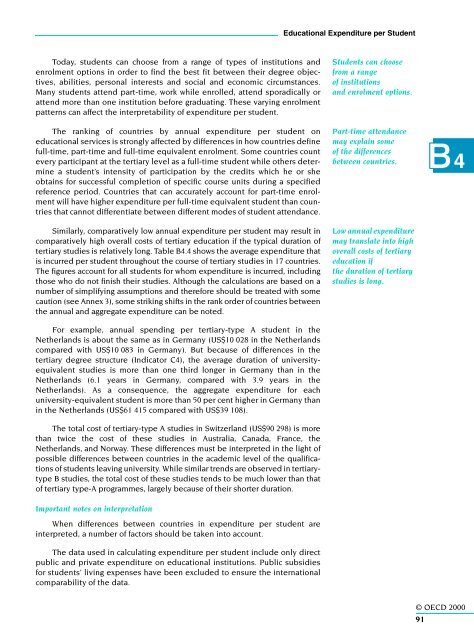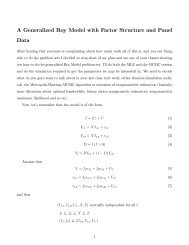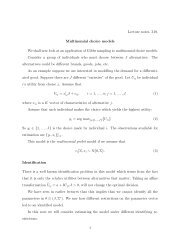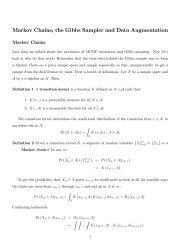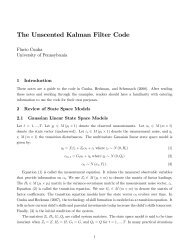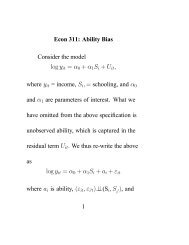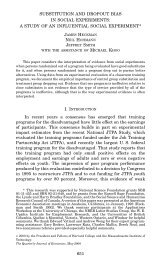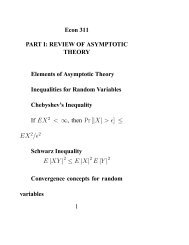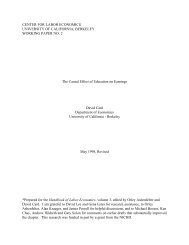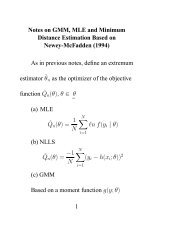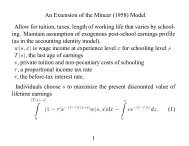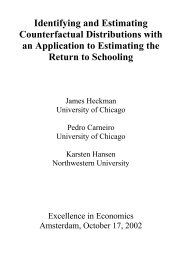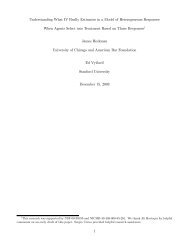OECD (2000)
OECD (2000)
OECD (2000)
You also want an ePaper? Increase the reach of your titles
YUMPU automatically turns print PDFs into web optimized ePapers that Google loves.
Educational Expenditure per Student<br />
Today, students can choose from a range of types of institutions and<br />
enrolment options in order to find the best fit between their degree objectives,<br />
abilities, personal interests and social and economic circumstances.<br />
Many students attend part-time, work while enrolled, attend sporadically or<br />
attend more than one institution before graduating. These varying enrolment<br />
patterns can affect the interpretability of expenditure per student.<br />
The ranking of countries by annual expenditure per student on<br />
educational services is strongly affected by differences in how countries define<br />
full-time, part-time and full-time equivalent enrolment. Some countries count<br />
every participant at the tertiary level as a full-time student while others determine<br />
a student’s intensity of participation by the credits which he or she<br />
obtains for successful completion of specific course units during a specified<br />
reference period. Countries that can accurately account for part-time enrolment<br />
will have higher expenditure per full-time equivalent student than countries<br />
that cannot differentiate between different modes of student attendance.<br />
Similarly, comparatively low annual expenditure per student may result in<br />
comparatively high overall costs of tertiary education if the typical duration of<br />
tertiary studies is relatively long. Table B4.4 shows the average expenditure that<br />
is incurred per student throughout the course of tertiary studies in 17 countries.<br />
The figures account for all students for whom expenditure is incurred, including<br />
those who do not finish their studies. Although the calculations are based on a<br />
number of simplifying assumptions and therefore should be treated with some<br />
caution (see Annex 3), some striking shifts in the rank order of countries between<br />
the annual and aggregate expenditure can be noted.<br />
For example, annual spending per tertiary-type A student in the<br />
Netherlands is about the same as in Germany (US$10 028 in the Netherlands<br />
compared with US$10 083 in Germany). But because of differences in the<br />
tertiary degree structure (Indicator C4), the average duration of universityequivalent<br />
studies is more than one third longer in Germany than in the<br />
Netherlands (6.1 years in Germany, compared with 3.9 years in the<br />
Netherlands). As a consequence, the aggregate expenditure for each<br />
university-equivalent student is more than 50 per cent higher in Germany than<br />
in the Netherlands (US$61 415 compared with US$39 108).<br />
The total cost of tertiary-type A studies in Switzerland (US$90 298) is more<br />
than twice the cost of these studies in Australia, Canada, France, the<br />
Netherlands, and Norway. These differences must be interpreted in the light of<br />
possible differences between countries in the academic level of the qualifications<br />
of students leaving university. While similar trends are observed in tertiarytype<br />
B studies, the total cost of these studies tends to be much lower than that<br />
of tertiary type-A programmes, largely because of their shorter duration.<br />
Important notes on interpretation<br />
When differences between countries in expenditure per student are<br />
interpreted, a number of factors should be taken into account.<br />
The data used in calculating expenditure per student include only direct<br />
public and private expenditure on educational institutions. Public subsidies<br />
for students’ living expenses have been excluded to ensure the international<br />
comparability of the data.<br />
Students can choose<br />
from a range<br />
of institutions<br />
and enrolment options.<br />
Part-time attendance<br />
may explain some<br />
of the differences<br />
between countries.<br />
Low annual expenditure<br />
may translate into high<br />
overall costs of tertiary<br />
education if<br />
the duration of tertiary<br />
studies is long.<br />
B4<br />
© <strong>OECD</strong> <strong>2000</strong><br />
91


